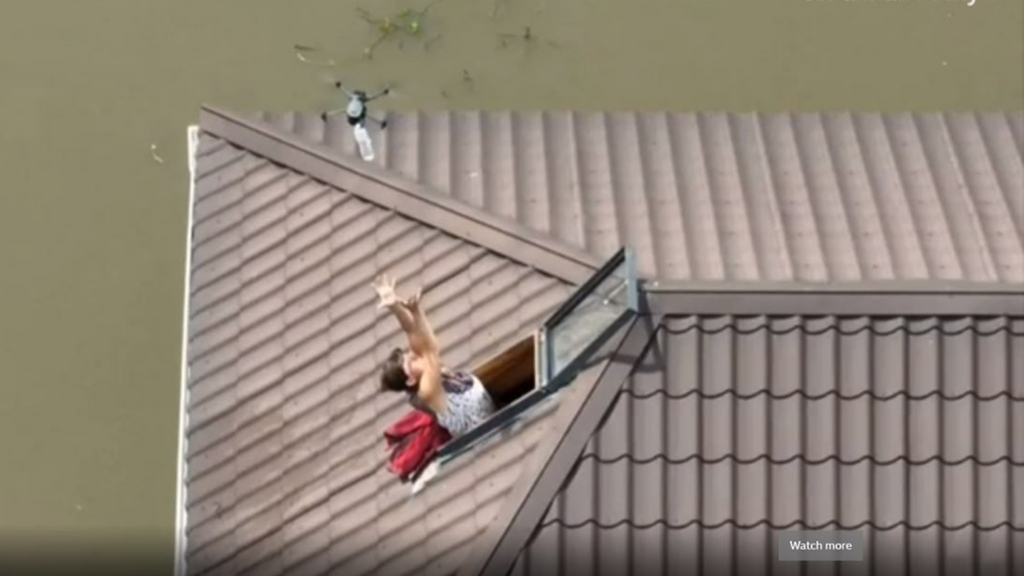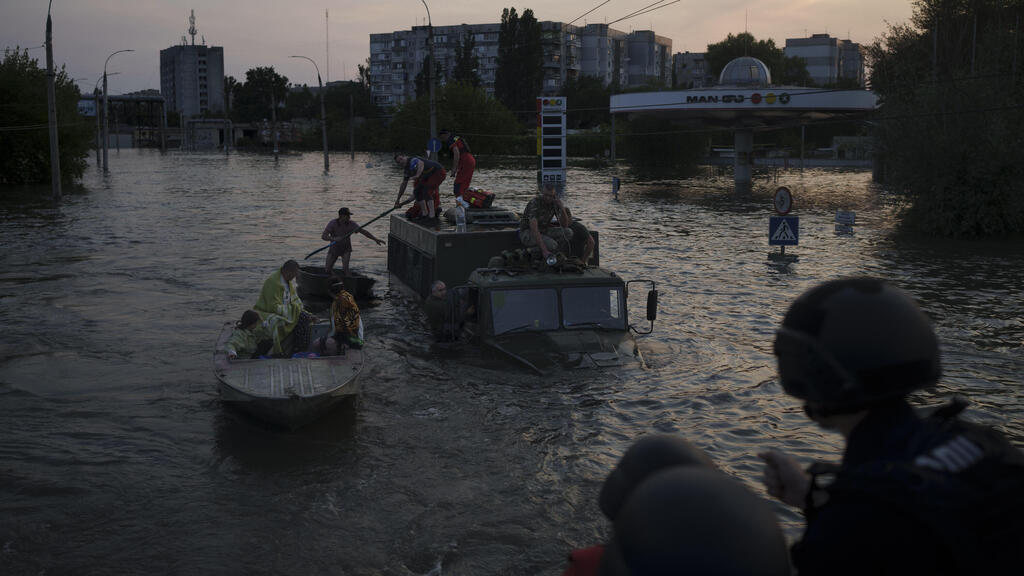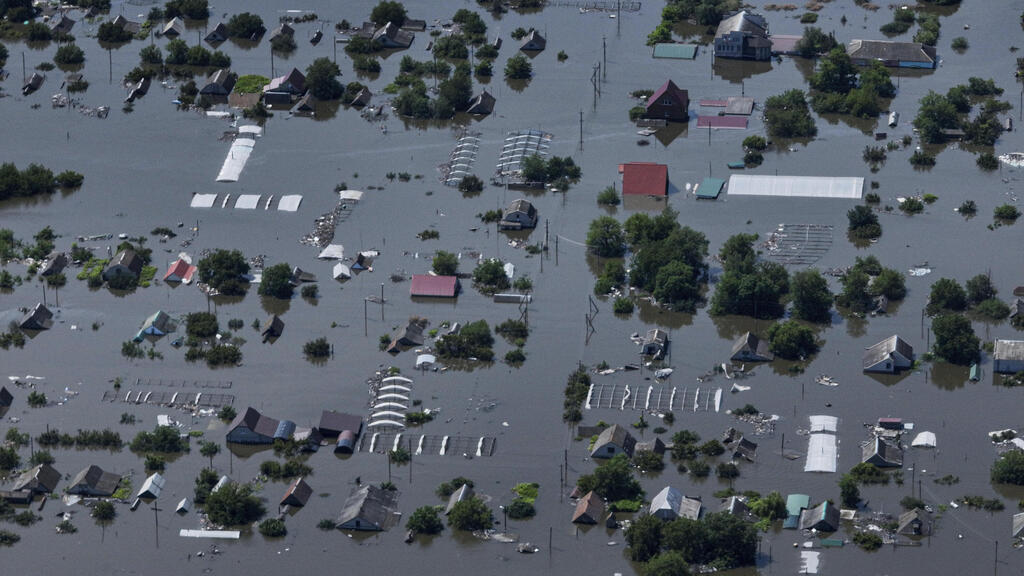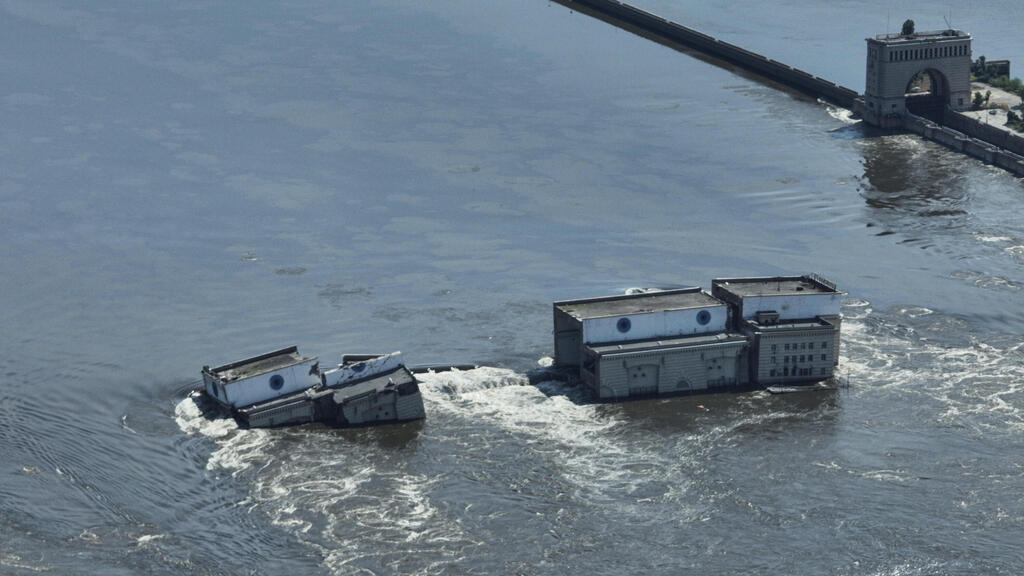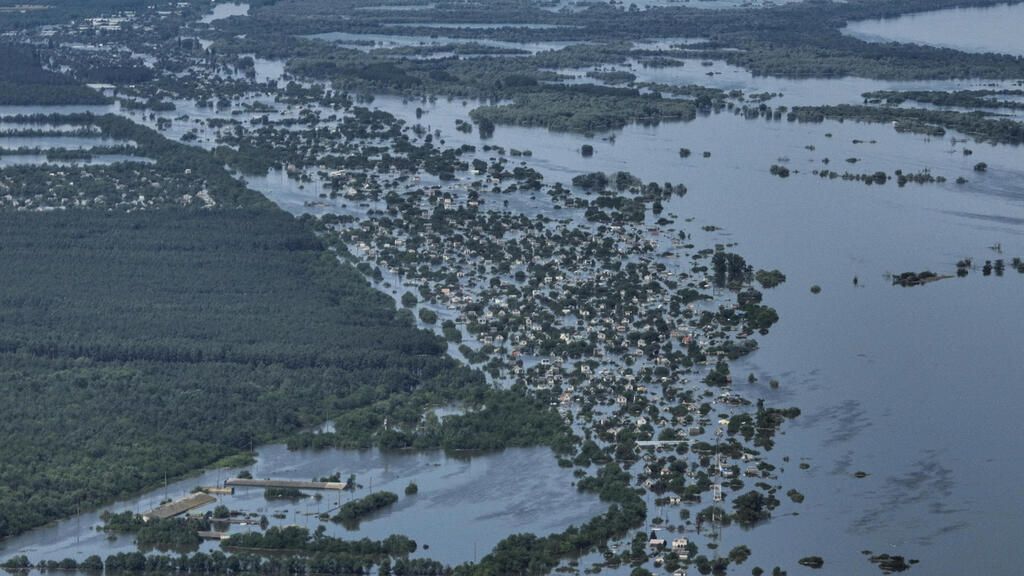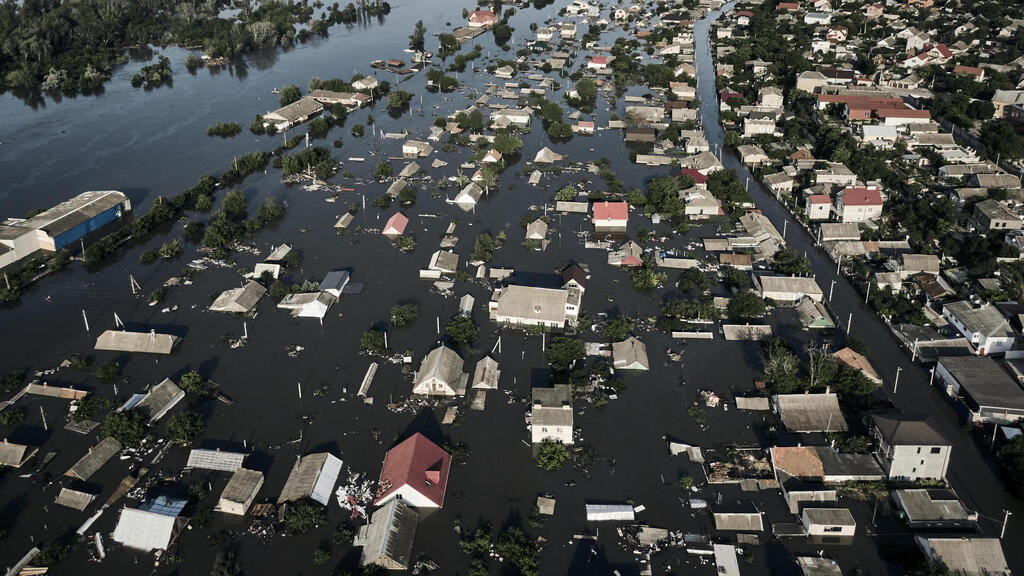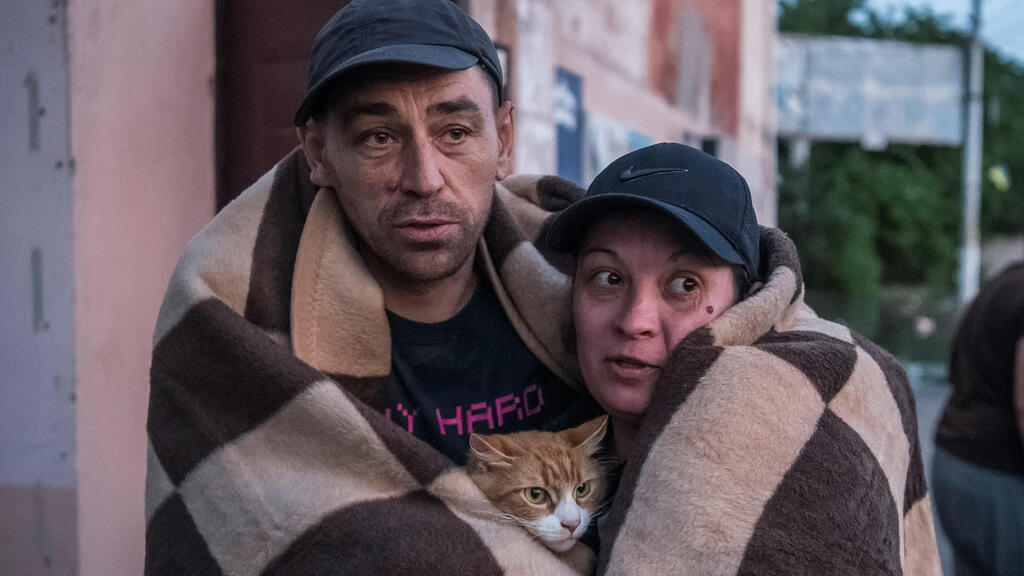Getting your Trinity Audio player ready...
Drones provide supplies to Ukrainian civilians
(Video: Ukrainian Armed Forces)
Hundreds of Ukrainians were rescued from rooftops in the flood-stricken southern region of Kherson on Thursday after the destruction of a dam submerged villages, fields, and roads, as Kyiv dismissed reports a counteroffensive had begun.
More stories:
Drone video showed areas where often only the roofs were visible above the flooding. The region's governor said some 600 square kilometers, or 230 square miles, were underwater.
The dam collapse happened as Ukraine prepared a counteroffensive, likely the next major phase in the war in which tens of thousands of people have been killed, millions uprooted and entire cities reduced to ruins since Russia's "special military operation" began on Feb. 24 last year.
NBC News, citing a senior officer and a soldier near the front lines, said the offensive had begun. The Washington Post cited "four individuals" in the armed forces saying the same thing.
Asked about the reports, a Ukrainian armed forces general staff spokesperson said: "We have no such information."
In its daily Ukraine briefing, Britain's defense ministry on Thursday reported heavy fighting along "multiple sectors of the front", adding that Kyiv held the initiative in most areas.
Ukraine's military said the flooding in Kherson had forced Russian troops to retreat by five to 15 km and had "practically halved" Russian shelling.
Reuters could not independently verify the battlefield situation. Russia did not immediately comment.
After learning of the disaster, Ukraine’s Chief Rabbi Moshe Azman went down to check up on the situation of the remaining Jewish communities in flooded areas.
The rabbi instructed his people to organize places of accommodation for refugees from the affected area in the Jewish hamlet of Anatevka on the outskirts of the capital Kyiv.
Additionally, after speaking with community leaders and government officials in the affected area, Rabbi Azman decided to immediately send a humanitarian aid mission to the area.
Despite the risks involved due to continued Russian shelling, a team of volunteer doctors arrived in the area along with trucks loaded with water, food, medicine, and clothing.
Ukraine’s Chief Rabbi Moshe Azman comes under Russian artillery fire
(Video: Украина 24/7 | Херсон on Telegram)
During rescue the aid mission, Russian forces began shelling the area, putting the delegation in the line of fire, but fortunately, no one was injured.
Rabbi Moshe Azman said, 'We have now arrived with the first emergency delegation to the affected area to assess the situation on the ground and see how we can help. I am in contact with the local Jewish community and authorities to provide assistance in any way we can to the residents whose lives have been upended due to Russia's war crimes being carried out here for more than a year.
They are also targeting rescue missions indiscriminately and committing crimes against humanity. I urge any moral country to come and help prevent the humanitarian crisis that we are facing.'"
Trading blame
Russia and Ukraine have traded blame for the bursting of the Soviet-era Kakhovka hydroelectric dam, which sent waters cascading across the war zone of southern Ukraine in the early hours of Tuesday, forcing tens of thousands to flee.
Rav Moshe Asman escaped russian attack
(Ukraine Chief Rabbinate)
Moscow and Kyiv also accused each other on Thursday of shelling the area as rescue workers in rubber dinghies tried to save people and animals from the still-rising flood waters.
Russian shelling killed a civilian in the Ukrainian city of Kherson, about 60 km (37 miles) downstream from the dam, on Thursday as people were being evacuated, Ukraine's Prosecutor General said. Two people were wounded. A Reuters reporter in Kherson said he could hear what appeared to be artillery fire but could not immediately provide details.
The Kremlin similarly accused Ukraine of shelling Russian rescue workers in the area, without providing evidence.
Russian Defense Minister Sergei Shoigu said his forces had repelled overnight attempts by Ukrainian forces to break through the frontline in the Zaporizhzhia region adjacent to Kherson.
Reuters could not independently verify his assertion.
Friends and family of stranded residents posted appeals online with names, photos, and GPS locations of residents. The coordinator of a volunteer group on the Telegram messaging app said the appeals were getting more urgent because people were running out of food and drinking water.
One man, Sergei, told Reuters the last time he spoke with his 83-year-old father-in-law in the Oleshky region was several days before the dam collapse.
"The latest information is that there was a lot of water in the street, as high as a person," he said. "Houses collapsed and went underwater."
Ukraine said the floods would leave hundreds of thousands of people without access to drinking water, swamp tens of thousands of hectares of agricultural land and turn at least 500,000 hectares deprived of irrigation into "deserts".
Ukrainian President Volodymyr Zelenskiy, who has appealed for a "clear and rapid" international effort to help flood victims, held emergency talks with officials in Kherson, one of five Ukrainian regions which Moscow claims to have annexed but only partially controls.
"It is important to calculate the damage and allocate funds to compensate residents affected by the disaster and develop a program to compensate for losses or relocate businesses within the Kherson region," Zelenskiy said.
Mine hazard
The Kremlin said Russian President Vladimir Putin had no plans to visit the region but was monitoring the situation.
Putin, without providing evidence, has accused Ukraine of destroying the Russian-controlled dam at the suggestion of its Western allies.
Kyiv said several months ago the dam had been mined by Russian forces who captured it early in their invasion and has suggested Moscow blew it up to try to prevent Ukrainian forces from crossing the Dnipro River in their counter-offensive.
It is not known how many people may have died as a result of the flooding. The Russian-installed mayor of Nova Kakhovka, near the dam site, said on Thursday at least five people had died but the total death toll is sure to be much higher.
Kherson's Ukrainian governor, Oleksandr Prokudin, said 68% of the flooded territory was on the Russian-occupied left bank of the Dnipro River.
The "average level of flooding" in the Kherson region on Thursday morning was 5.61 meters (18.41 ft), he said.
The water level at the Kakhovka reservoir was approaching a dangerous low, the state company overseeing the facility said on Thursday, saying this could affect the nearby Zaporizhzhia Nuclear Power Station and water supply to other regions.
The U.N. atomic watchdog said on Tuesday the plant, Europe's largest, has enough water to cool its reactors for "several months" from a pond located above the reservoir.
Ukrainian and Russian officials have also warned of the danger posed by mines planted during the 15-month-old war and now unearthed and scattered by the flood waters.
First published: 20:21, 06.08.23





